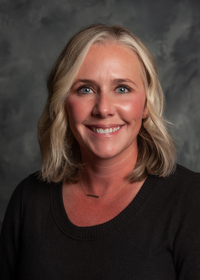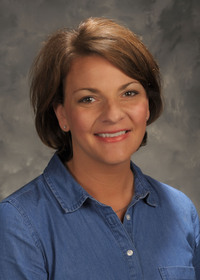Information Possibly Outdated
The information presented on this page was originally released on January 25, 1999. It may not be outdated, but please search our site for more current information. If you plan to quote or reference this information in a publication, please check with the Extension specialist or author before proceeding.
Digital Technology Saves Plants, Time
MISSISSIPPI STATE -- Digital technology is allowing Mississippi plant specialists to lend their expertise without leaving the office, drastically cutting response time to problems.
Dr. Frank Killebrew, plant pathologist with the Mississippi State University Extension Service, is using digital cameras and e-mail to distance diagnose plant diseases. He established a pilot program in five counties, and expects to expand this year.
"I recognized the applicability of being able to use a digital camera that saves to a floppy diskette to take photos of diseased plants in the field," Killebrew said. "These images can then be e-mailed to a specialist for identification."
With a little background information such as whether the problem is widespread or occurs in pockets, the specialist can diagnose the problem. Killebrew said he has been able to identify the problem in 90 percent of the images e-mailed to him.
"Within 15 to 20 minutes, the grower has a reply of what the problem is and is offered control measures," Killebrew said.
Dr. Leliah Scott Kelly, owner of Suitor's Crossing Herb Farm in Corinth, is a wholesale grower of cold season vegetables and herbs. Last spring, she noticed that the older leaves on her cabbage and some collards were yellowing.
"We thought at first it was a nutritional problem, so we did tissue and soil analysis," Kelly said. "We corrected what we thought was the problem, but it still persisted."
Alcorn County Agent Stanley Wise brought Killebrew in to diagnose the problem before any plants were lost. Wise transmitted digital photos of the plants and information about the greenhouse setup to Killebrew. Armed with the photos and knowledge that a kerosene heater was being used in the greenhouses, Killebrew identified a gas leak as the reason for plant decline.
"He told me that was the type of damage you would get when a kerosene heater is not properly vented," Kelly said.
Kelly replaced the heater, and the problem disappeared. The affected plants recovered, preventing about $8,000 in loss of transplants.
He now is trying to expand distance diagnosis into more Mississippi counties. He also would like to see the technology applied to entomology and weed science, although it has potential applications in many more areas.
The system is only as good as the person taking the photos, an area Killebrew intends to improve with agent training. If the right views are not shown, a specialist cannot make a diagnosis. But even with good photos, not all problems can be diagnosed with this technology.
Without distance diagnosis, specialists must either visit the problem area or samples must be sent. In addition to quick turnaround time, the distance technology offers the chance for specialists in other states to collaborate on a diagnosis. And with photos, there is no deterioration as the sample is transported to the specialist.





